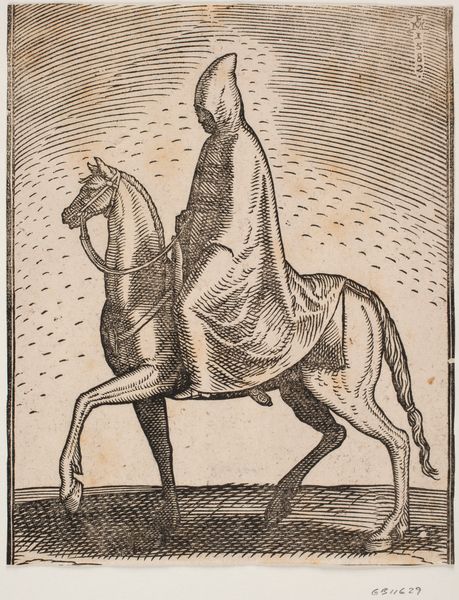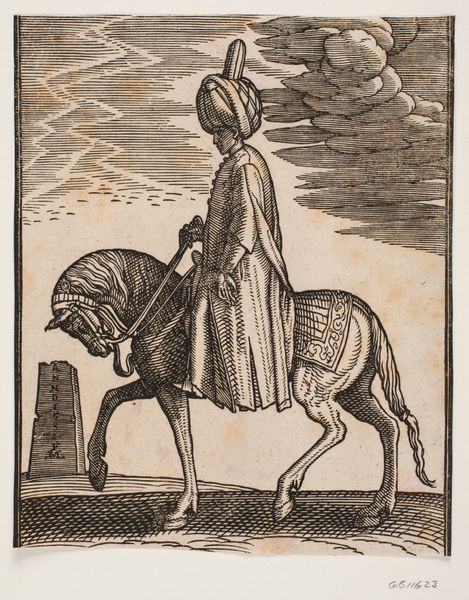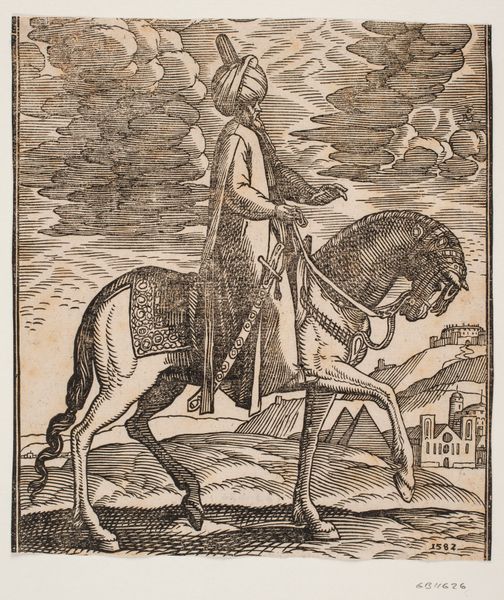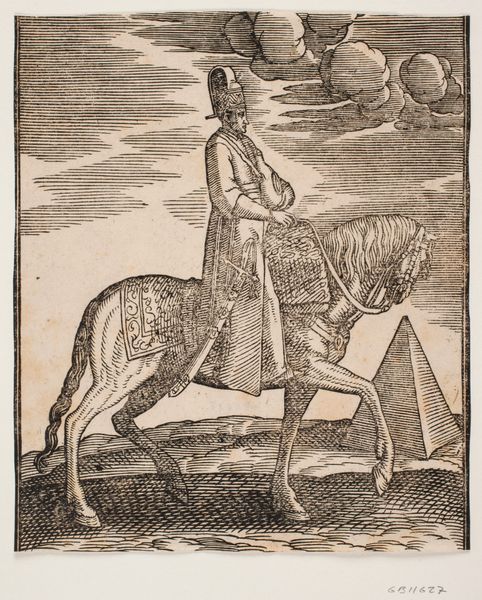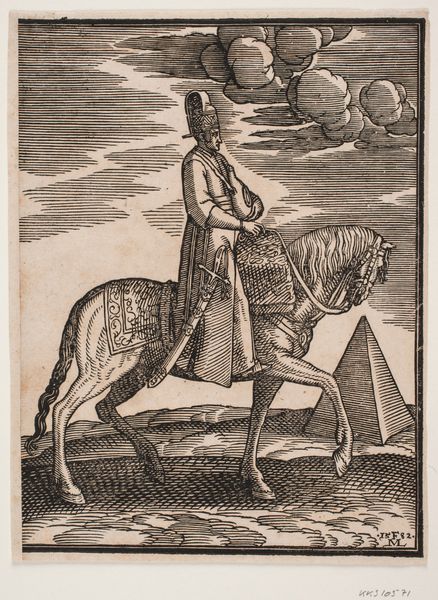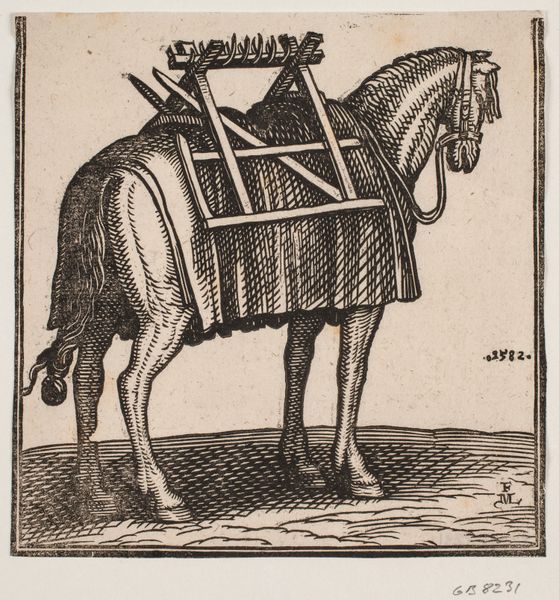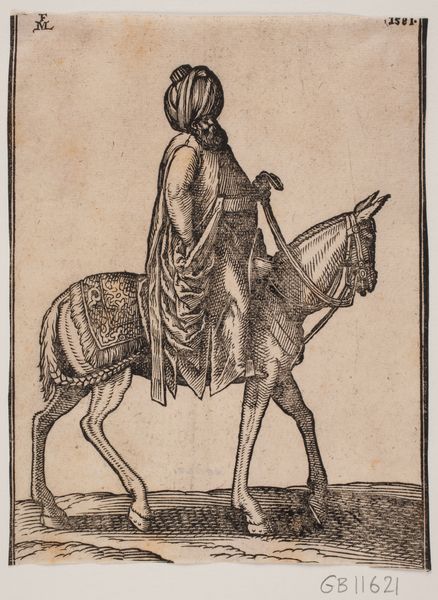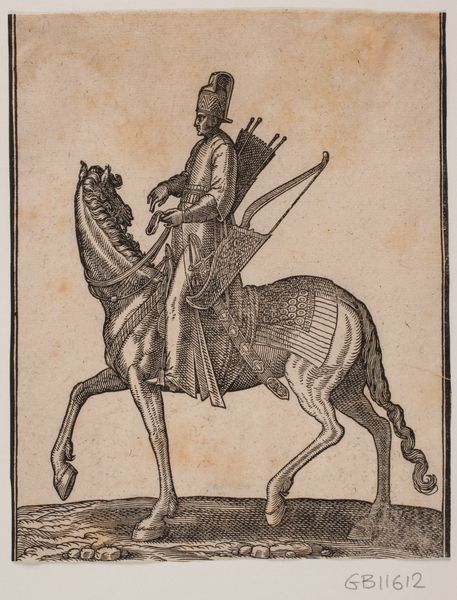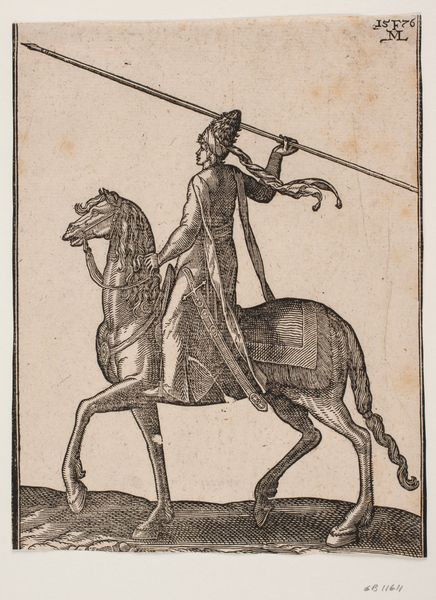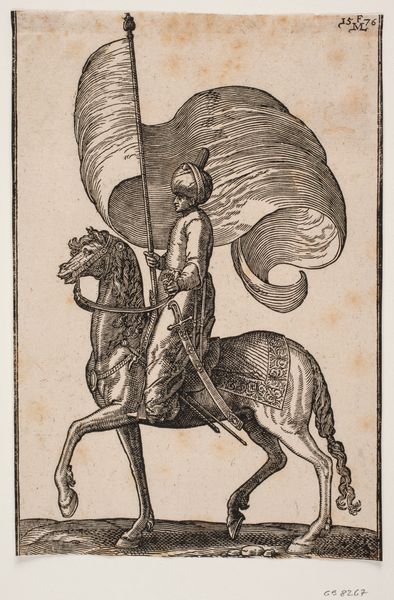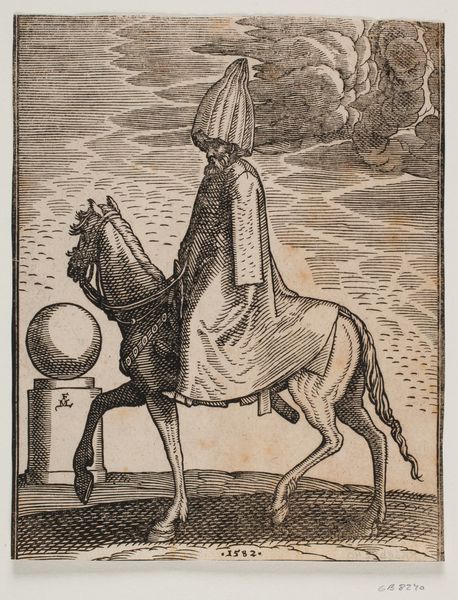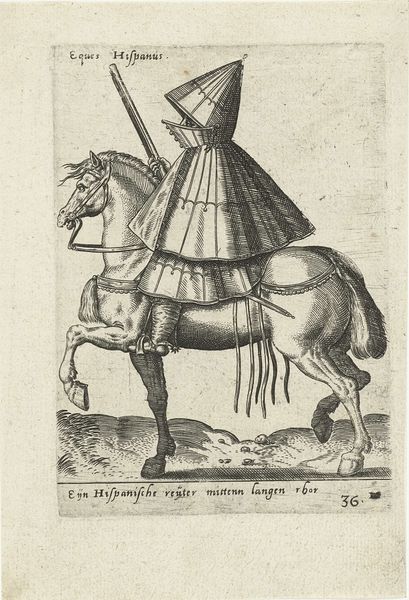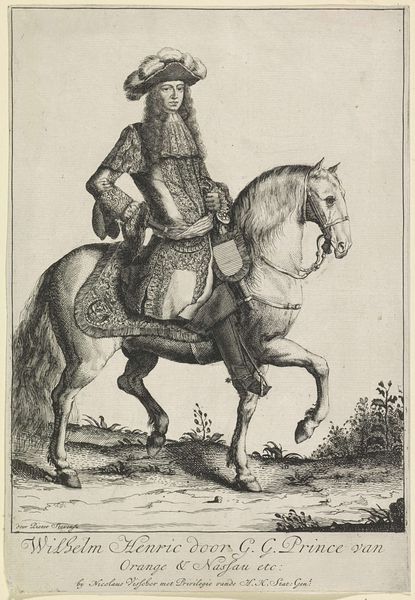
Unarmed turban-clad rider, profile towards the left; in the upper right area of the picture, a separate delineation of a stick 1582
0:00
0:00
drawing, print, metal, woodcut
#
portrait
#
drawing
# print
#
metal
#
woodcut
#
genre-painting
#
northern-renaissance
Dimensions: 193 mm (height) x 160 mm (width) (bladmaal)
Melchior Lorck's woodcut presents us with a turban-clad rider, a figure imbued with the visual cues of the 'Orient' that captivated 16th-century Europe. The turban, an emblem of the Ottoman Empire, signified not only status but also a cultural and religious identity perceived as 'other'. Consider how equestrian portraits, since antiquity, have been potent symbols of power and authority. Yet, here, the rider is unarmed, an intriguing detail. This recalls the iconography of the 'noble savage', a figure romanticized yet also exoticized. The horse, a symbol of strength and freedom, seems almost burdened, its gait measured and thoughtful. The vertical stick in the background mirrors the rider's erect posture, perhaps suggesting a moral compass or a spiritual quest. This image, like many, carries within it a complex interplay of admiration and apprehension, fascination and fear. It is an example of how cultural symbols can evolve, reflecting our ever-changing relationship with the 'other'.
Comments
No comments
Be the first to comment and join the conversation on the ultimate creative platform.
